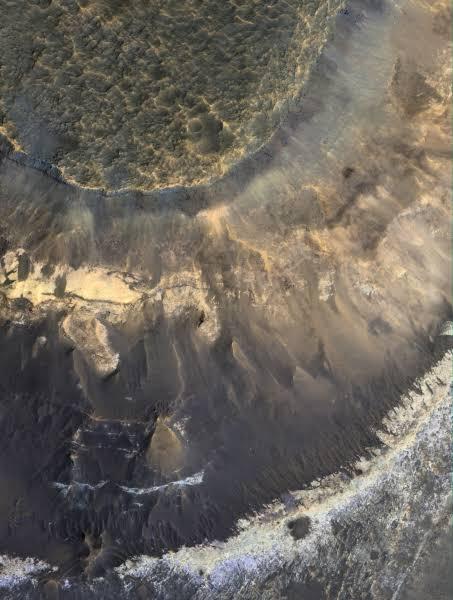Thick Clay Layers May Have Sheltered Ancient Life on Mars
New research from a team of international scientists suggests that Mars’ ancient clay deposits may have once hosted conditions suitable for life. According to the study, these clay-rich terrains, found in multiple regions across the Red Planet, could have provided stable and protected environments for microbial life to thrive billions of years ago. The findings hold deep implications for astrobiology and NASA’s ongoing Mars missions.
What the Research Uncovered About Martian Clay
Scientists have long known about the presence of clay minerals on Mars, but the new research delves into their origin, formation, and potential role in sustaining life. Clay minerals typically form through extended contact between water and rock, serving as a strong geological indicator of past water activity. On Earth, such environments frequently harbor microbial life, prompting scientists to explore similar links on Mars.
According to the study published in Nature, the team analyzed Martian clay structures using data from NASA’s Mars Reconnaissance Orbiter (MRO) and ESA’s Mars Express. They found that the thick clay deposits in areas such as Mawrth Vallis and Nili Fossae exhibit signs of long-term water interaction. This water-rock chemistry created habitable niches protected from harsh space radiation and Mars’ extreme weather conditions.
Expert Analysis of Martian Habitability
Dr. Lujendra Ojha, a planetary scientist at Rutgers University and one of the lead researchers, said: “These clay-rich terrains could have sustained aqueous environments long enough for life to potentially emerge. The protective nature of clay as a mineral means these environments were not only wet but stable.”
Stability is a critical factor when considering Martian habitability. While regions on Mars have shown evidence of ephemeral water flows, long-standing wet environments are much rarer and more valuable in the search for life. The study’s data indicates that some of the clay deposits remained geologically stable for hundreds of millions of years.
How Aqueous Systems Affected Martian Landscapes
Contributing further to the study, researchers from the University of Texas at San Antonio (UTSA) explored how aqueous systems influenced ancient Martian topography. Their analysis revealed that chemical weathering over time helped shape many of the planet’s deep channels and basins. These erosional patterns, influenced by climatic shifts, played a role in concentrating clay in specific regions. The findings align with past missions, including NASA’s Curiosity and Perseverance rovers, which have both found compelling signs of ancient hydrology.
A UTSA researcher remarked, “Our findings provide new insights into how Mars’ surface was shaped not just by rapid events, like meteor impacts, but by prolonged weathering and water-driven erosion. That’s the kind of environment where you might find traces of ancient biosignatures.”
The Role of Clay in Preserving Biosignatures
Clay’s fine particle size and chemical properties make it an excellent medium for preserving delicate biological molecules. In fact, on Earth, some of the oldest fossilized microbial life was discovered in ancient clay deposits. Mars’ clay beds may offer the best chance yet of uncovering such preserved biosignatures.
“If life ever did exist on Mars, thick clay deposits are where we’re most likely to find evidence of it,” said Dr. Anjali Sharma, an astrobiologist affiliated with the European Space Agency. “They serve as a protective archive of Martian history, possibly including biological history.”
Implications for Future Mars Missions
This research arrives at a pivotal moment, as NASA’s Perseverance rover continues its mission to collect rock and soil samples in Jezero Crater. The crater, once home to a vast lake, is rich in clay minerals and a prime candidate for evidence of life. Sample return missions planned by NASA and ESA aim to bring back Martian soil, potentially including samples from these promising clay zones.
As Dr. Sharma stated, “This study essentially tells us where to look. It narrows the search area for past Martian life and strengthens the case for sample return missions.”
Ancient Mars: A More Earth-like World?
The growing body of research supports the theory that ancient Mars was once a much more Earth-like world — warmer, wetter, and geologically active. The thick clay layers highlight that parts of ancient Mars may have had the right combination of elements essential for life: liquid water, warmth, minerals, and time.
Though definitive evidence of life remains elusive, studies like this significantly enhance our understanding of the Red Planet’s past. They also reinforce the importance of international collaboration in planetary science and space exploration. Ongoing research and planned missions continue to build on the hope that Mars may one day offer answers to one of humanity’s oldest questions: Are we alone in the universe?
Next Frontiers in Martian Astrobiology
Looking ahead, researchers aim to identify more ancient clay-rich zones using upcoming satellite data and AI-powered analysis tools. Missions like ExoMars, slated for future launch, will specifically target clay-rich terrains in search of preserved organic material.
The convergence of geological evidence, water presence, and stable climate zones painted by this research underscores just how tantalizingly close we may be to discovering signs of ancient Martian life. With each study and mission, Mars gradually reveals itself as a planet whose story is still being written.

